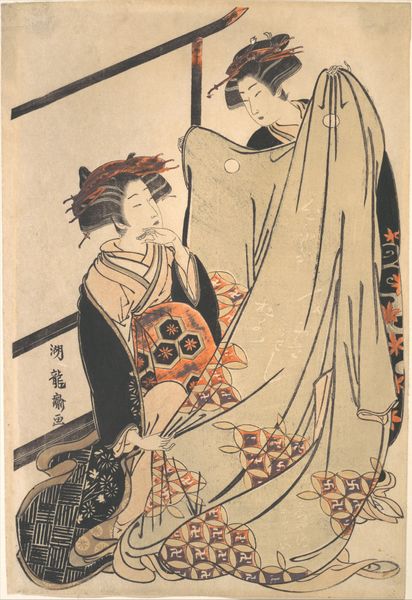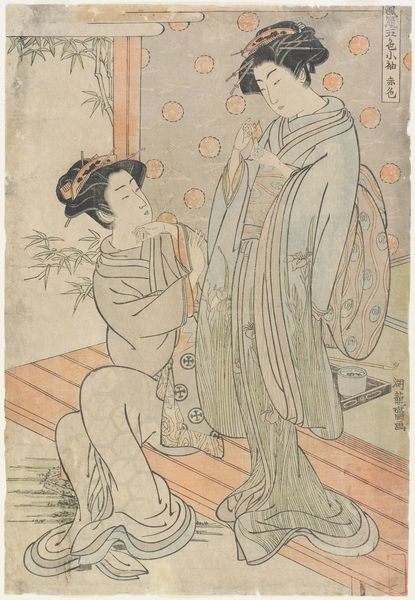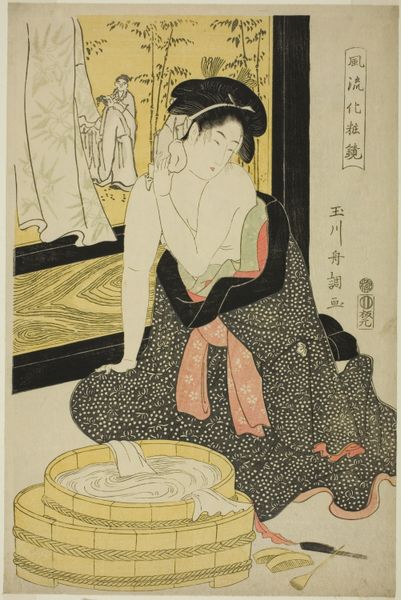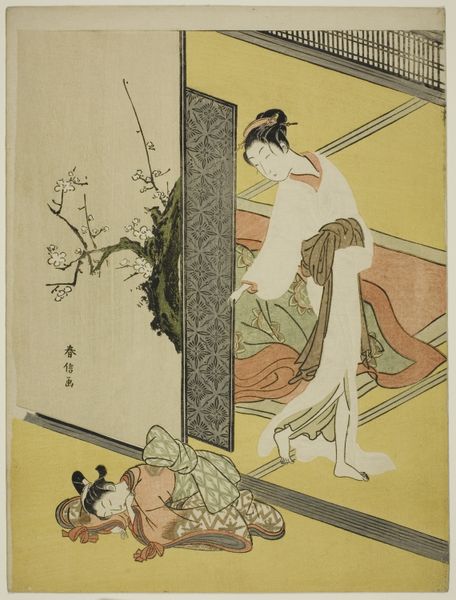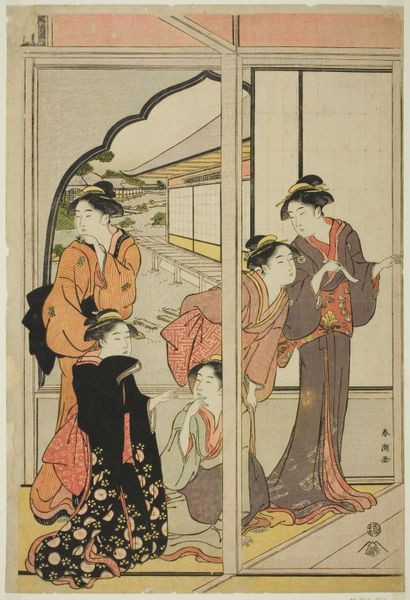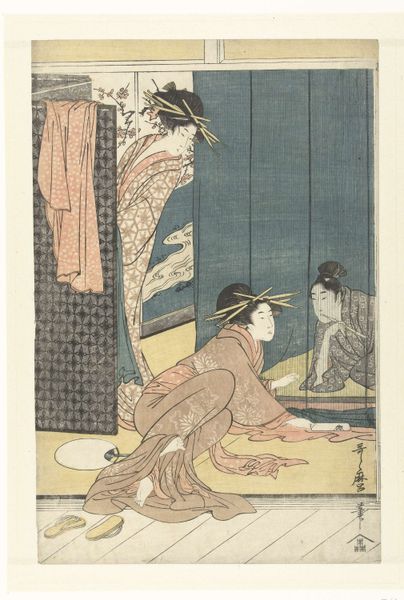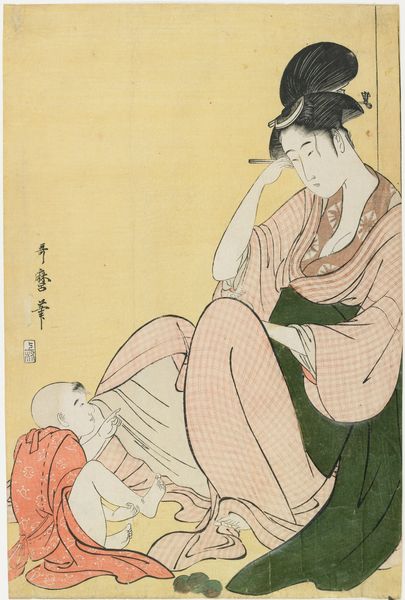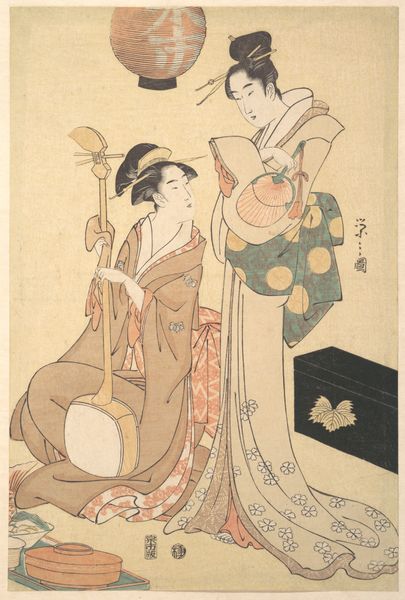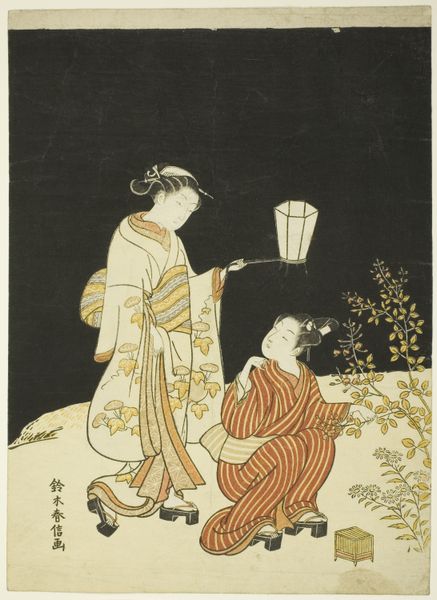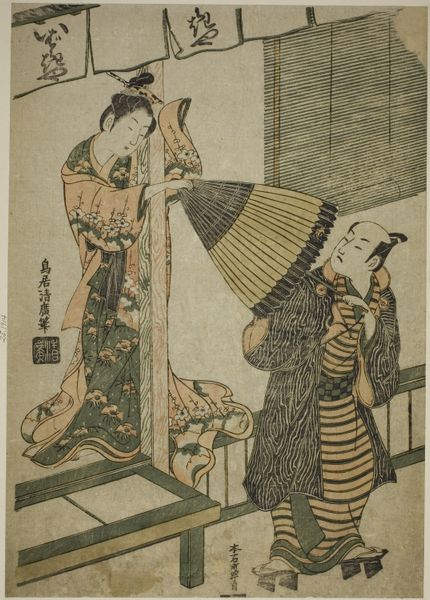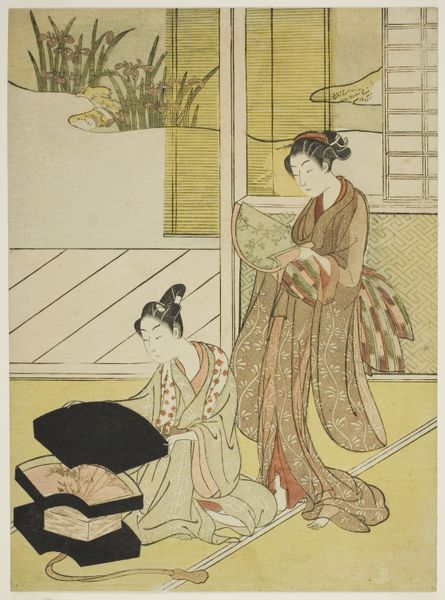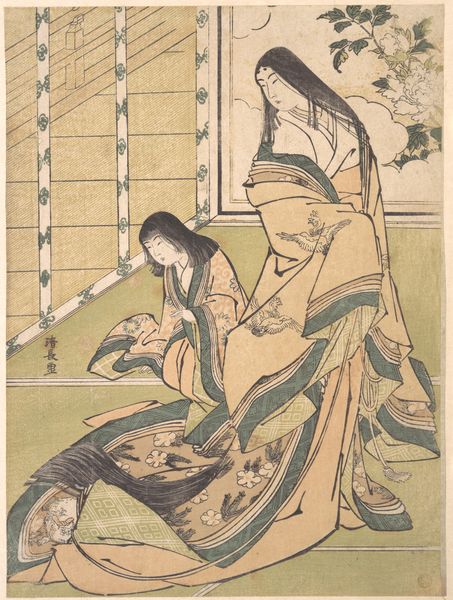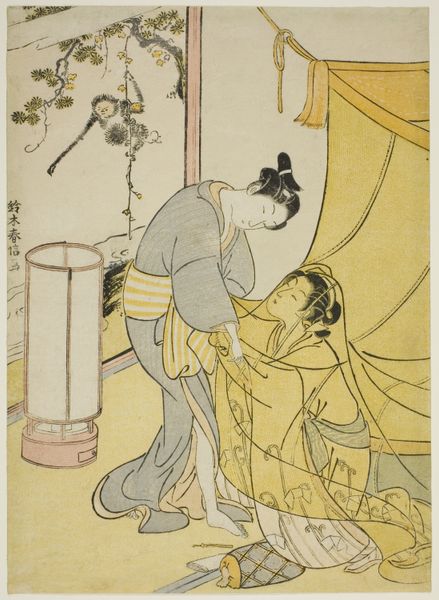
The actors Onoe Matsusuke I as the ghost of the wet-nurse Iohata and Matsumoto Kojiro as Mokuemon, in the play "Tokubei of India: Tales of Strange Lands (Tenjiku Tokubei ikoku banashi)" c. 1804
0:00
0:00
print, woodblock-print
#
portrait
#
narrative-art
# print
#
asian-art
#
ukiyo-e
#
woodblock-print
Dimensions: 14 5/8 × 10 1/8 in.
Copyright: Public Domain
Curator: This striking woodblock print, created around 1804 by Utagawa Toyokuni I, depicts actors in the play "Tokubei of India: Tales of Strange Lands." Specifically, we see Onoe Matsusuke I as the ghost of Iohata and Matsumoto Kojiro as Mokuemon. Editor: The high contrast immediately grabs you. That spectral figure looms over the fallen man; it creates an incredible sense of dread. It's a masterclass in using negative space. Curator: Indeed. The image leverages a well-established visual vocabulary in Japanese folklore. The ghost, with her long, unbound hair and pale visage, is a recurring motif symbolizing vengeful spirits. This links to deep cultural beliefs about unresolved grievances and the spirit world. Editor: The composition is quite interesting. The strong vertical lines of the gate intersect sharply with the diagonal of Mokuemon’s body, which is huddled at its base; his form creates this spiraling tension, drawing our eye to the top of the image, that apparition. It almost feels stagey – deliberately composed. Curator: It is! This is *ukiyo-e*, after all—the art of the floating world. These prints were often commissioned to promote popular Kabuki plays and actors. The exaggerated expressions and dynamic poses served as a form of visual advertising. Consider how it might resonate in the psyche of an early 19th century audience! Editor: What strikes me is how Toyokuni captures movement using such simple, bold lines. It gives the impression that this supernatural confrontation happened just now, suddenly and violently. Look how angular and broken the lines are; this enhances that sensation of alarm. Curator: Consider also the significance of the "wet-nurse" ghost. This hints at themes of betrayal, loyalty, and maternal bonds—powerful emotive drivers. Editor: The economy of line in the depiction of the face of Mokuemon is just brilliant, a stark expression of terror. The lines of the face point up toward the looming figure. Toyokuni gives us just enough detail. Curator: Studying such visual signifiers gives a deep sense of enduring human themes through the ages. A tale of fear and guilt conveyed in culturally specific yet universally resonant imagery. Editor: The formal beauty lies in its ability to compress this intricate narrative and powerful feeling into such a well-considered arrangement.
Comments
No comments
Be the first to comment and join the conversation on the ultimate creative platform.
